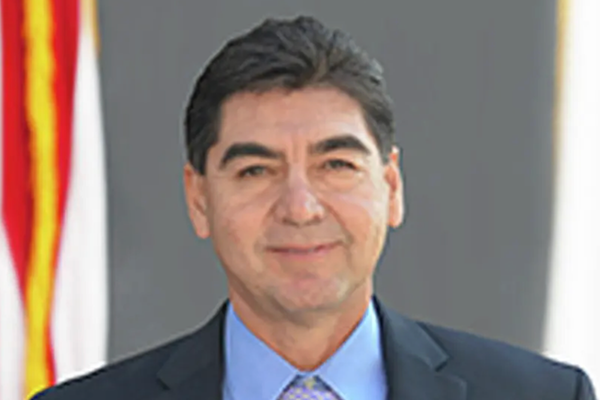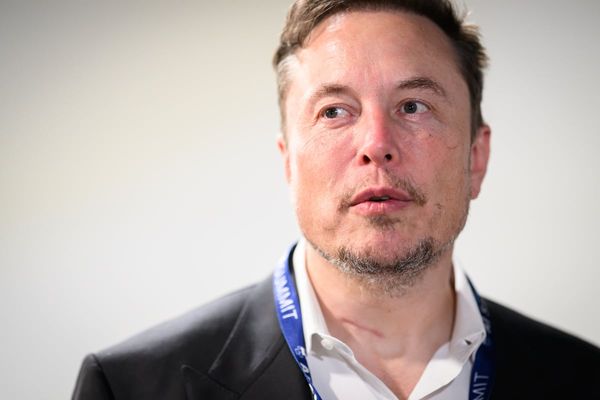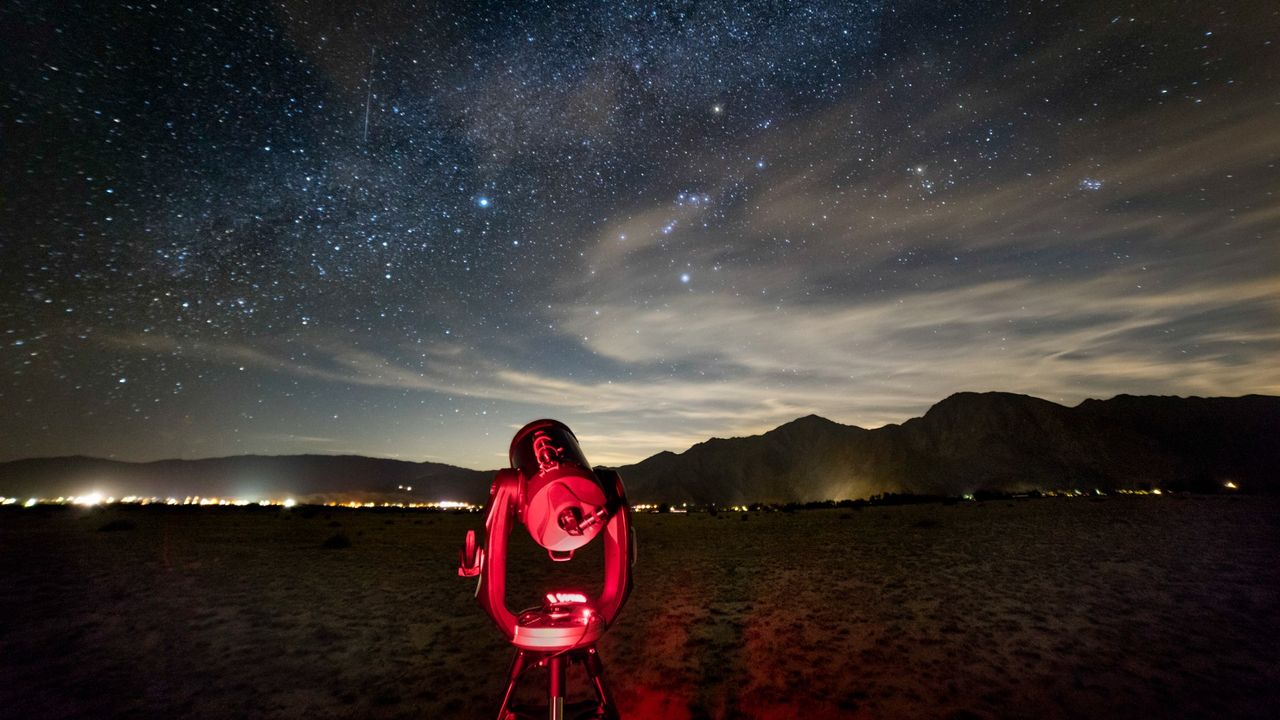

Want to see the visible planets in the night sky? The Celestron NexStar 4SE is ideal for beginners wanting quality, reliable and quick views of celestial objects. For a more in-depth look at our Celestron NexStar 4SE review.
December is the month of the winter solstice, which is often associated with such festivals as the Nativity. Ask people at random and 19 out of 20 will say that it is the birthday of Jesus. Yet, the Bible says nothing about the calendar date of the Nativity. In ancient times, Dec. 25 was the date of the lavish Roman festival of Saturnalia, a sort of bacchanalian thanksgiving. Saturnalia was celebrated at the time of the winter solstice. In 2025, the sun, appearing to travel along the ecliptic, will reach that point in the sky where it is farthest south of the celestial equator on Dec. 21.
During December, we bid a fond adieu to dazzling Venus, which slips into the bright morning twilight and disappears from view, relinquishing its title as the morning star that it has held since last spring. Its "winter sabbatical" will continue until late February, when it will begin to appear low in the western evening sky shortly after sunset.
Mars, too, is another planet that is hopelessly lost in the glare of the sun this month. It will be "out of the viewing loop" for quite some time and will not begin to be readily seen until sometime in early spring, during dawn twilight, very low in the eastern sky.
In contrast, Mercury will enjoy its finest morning apparition of the year in December and can be easily observed in the east-southeast sky about 45 minutes before sunrise during the first three weeks of the month.
In the evening sky, brilliant Jupiter is the brightest starlike object among the bright stars of the winter season, dominating the east-northeast sky a few hours after sunset. Finally, there is Saturn, appearing not overly bright but still standing out against the relatively dim stars of Aquarius. It's well up in the southern sky and dusk and remains available for observation through the first half of the night.
In our schedule, remember that when measuring the angular separation between two celestial objects, your clenched fist held at arm's length measures roughly 10 degrees. Here, we present a schedule below which provides some of the best planet viewing times, as well as directing you as to where to look to see them.
The sun
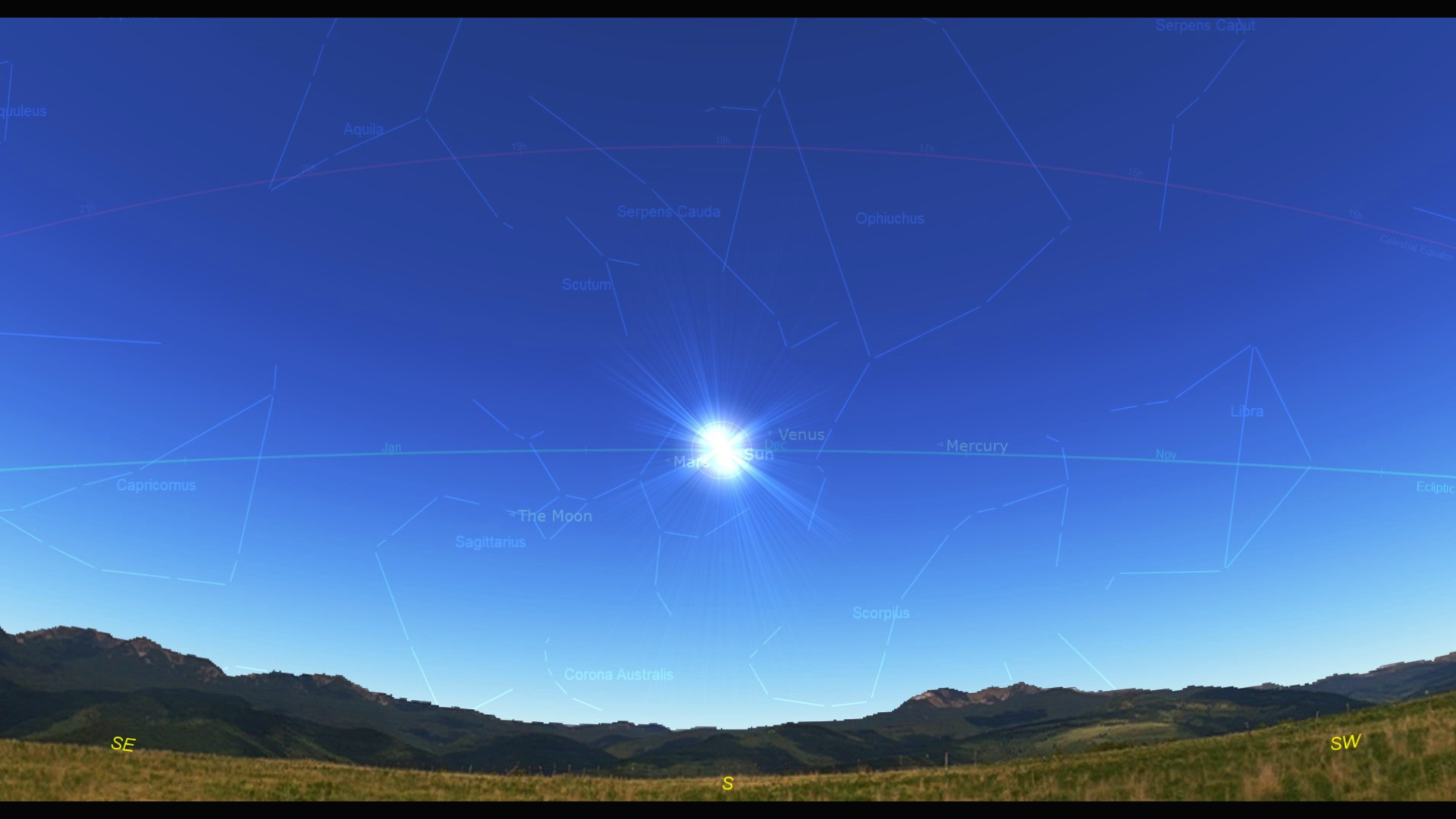
The sun arrives at the December solstice at 10:03 a.m. EST on Dec. 21. This is the farthest south the sun gets in the heavens; it begins its six-month return northward at the moment winter begins in the Northern Hemisphere.
Mercury

Mercury reaches its greatest elongation on the morning of Dec. 7, 21 degrees west of the sun. This is the best morning apparition of the year for most U.S. observers; from latitude 40 degrees N, this speedy planet rises before the beginning of astronomical twilight for the first two weeks of December. Three-quarters of an hour before sunup, look 10 degrees above the horizon and about 30 degrees south of due east to find elusive Mercury.
Shining at -0.5 from Dec. 9 through Dec. 21, Mercury remains a naked-eye predawn sight, but it will be getting lower. Mercury passes 5.5 degrees to the upper left of 1st-magnitude Antares on Dec. 19 but that ruddy star probably won't be visible with the naked eye from the northern U.S. until several days later. Mercury itself becomes difficult to see in bright twilight by around Christmas.
Venus
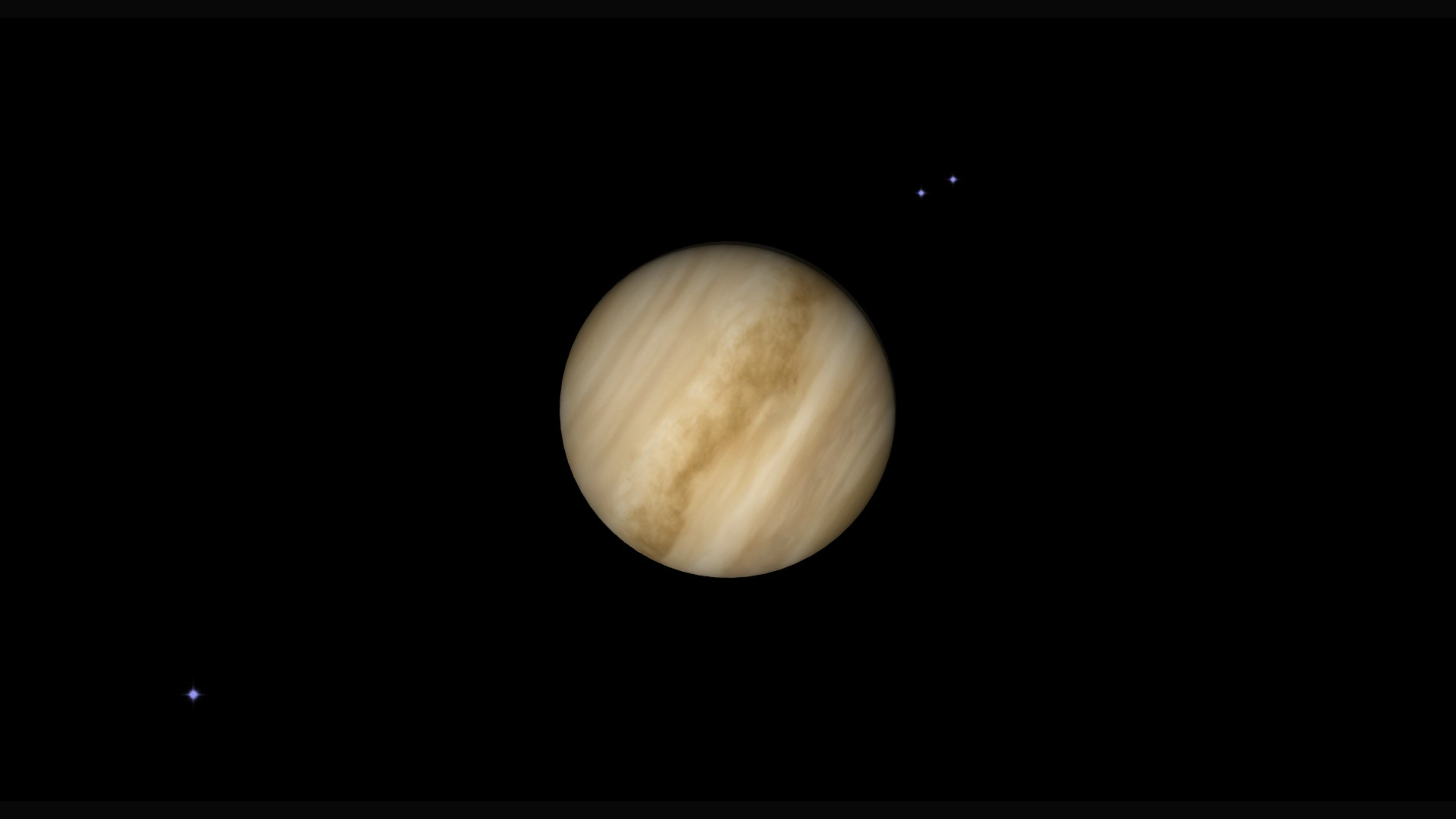
Venus rises 45 minutes before the sun as December starts, but is hopelessly lost in bright twilight and finally disappears into the glare of sunrise well before the month's end, after sinking lower and lower in the dawn since last summer.
Mars
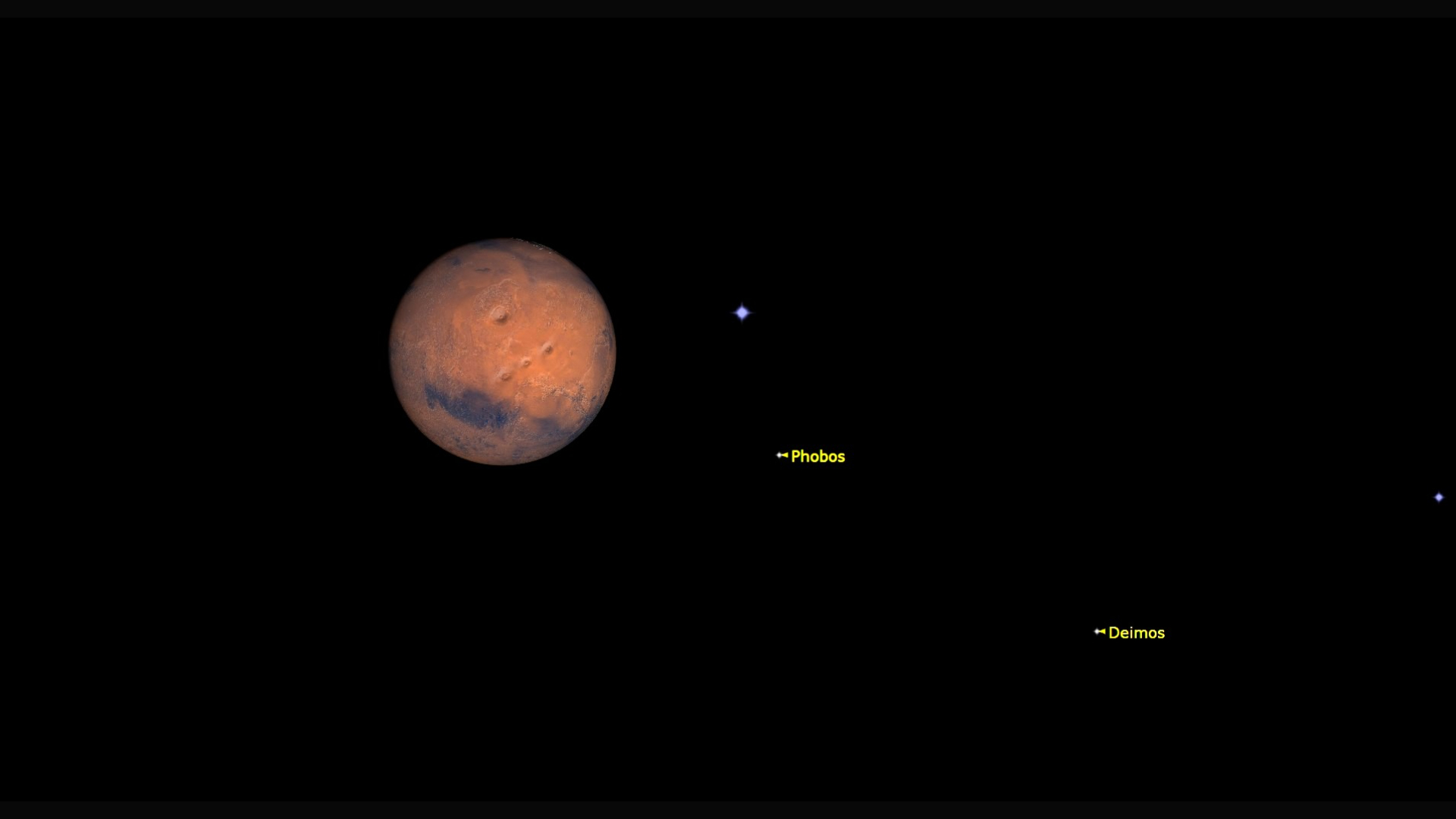
Mars is another planet that's out of the viewing loop this month; currently hidden behind the sun's glare, it's in solar conjunction on Jan. 9.
Jupiter

Jupiter shines brilliantly at magnitude -2.6, gleams low in the east-northeast about three hours after sundown, and climbs the eastern sky all evening, and shines high toward the south between midnight and dawn. The giant planet is a splendid sight in any telescope. On the evening of Dec. 7, it will be accompanied by a waning gibbous moon; the big planet will appear to lead the moon across the sky with Jupiter about 7 degrees to the upper right of the moon.
Saturn

Saturn is not very prominent at magnitude +1.1 but stands all by itself high in the south as the sky darkens. The planet is at eastern quadrature (90° east) on Dec. 16. and by year's end it starts to pick up speed as it moves eastward across northeastern Aquarius.
But all that will matter to most of us is the rings. At the start of the month, they're tilted only 0.4 degrees — almost edge on — toward Earth, but the inclination angle widens slightly to 1 degree by year's end. The evening of Dec. 26 finds Saturn sitting about 3 degrees to the lower left of the moon.
Joe Rao serves as an instructor and guest lecturer at New York's Hayden Planetarium. He writes about astronomy for Natural History magazine, the Farmers' Almanac and other publications. Follow us on Twitter @Spacedotcom and on Facebook.
Editor's Note: If you get a great photo of any of the planets and would like to share it with Space.com's readers, send your photo(s), comments, and your name and location to spacephotos@space.com.

